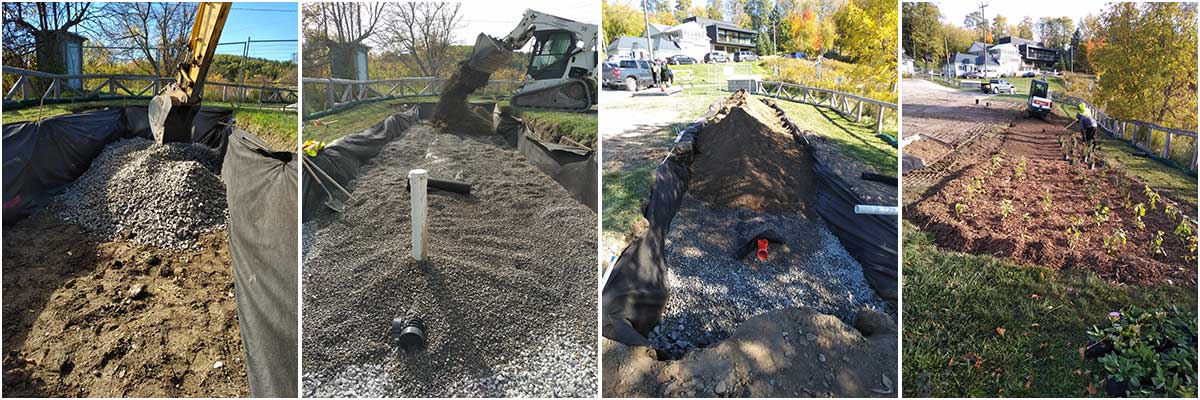Low Impact Development Project
Nokiidaa Trail Parking Lot Retrofit

In partnership with the Town of East Gwillimbury, we recently completed an low impact development parking lot retrofit at the corner of Mount Albert Road and Yonge Street.
What was the problem?
The previous parking lot, made of an impervious, hard-packed gravel layer, made it difficult for water to soak into the ground. During major storm events, the runoff from the large surrounding area would flow across the parking lot, picking up pollutants along the way. Because the impervious parking lot didn’t allow the water to infiltrate, the gravel and other pollutants flowed directly into the river.
Stormwater runoff picks up pollutants as it travels across paved or impervious surfaces in urban areas. When it reaches rivers and streams, it degrades the quality of the water, making it difficult for sensitive species to survive.
Solving the Problem
The goal of this project was to resurface the parking lot with asphalt. This allowed us to direct the runoff from the hard surface into a large bioretention swale. This swale will filter up to 25 cubic metres of stormwater (250 bathtubs or 25,000 water bottles!) during each major storm event. This prevents all of those pollutants from flowing directly into the river.
Bonus – The parking lot can now stay open year round!
We provided $31,000 towards the project to cover the cost of the new feature. The estimated phosphorus reduction is 0.3 kg/year.
What is a bioretention swale?
Bioretention is a low impact development technique that provides storage, treatment, infiltration and routing of surface water runoff in a landscaped area. Bioretention features mimic natural processes by absorbing water and filtering pollutants, directing water back into the ground or overland to appropriate outlets.

Building the Bioretention Swale

![]() Who to Contact
Who to Contact
Restoration
✆ 905-895-1281
✆ 1-800-465-0437 Toll free
✉ restoration@LSRCA.on.ca
